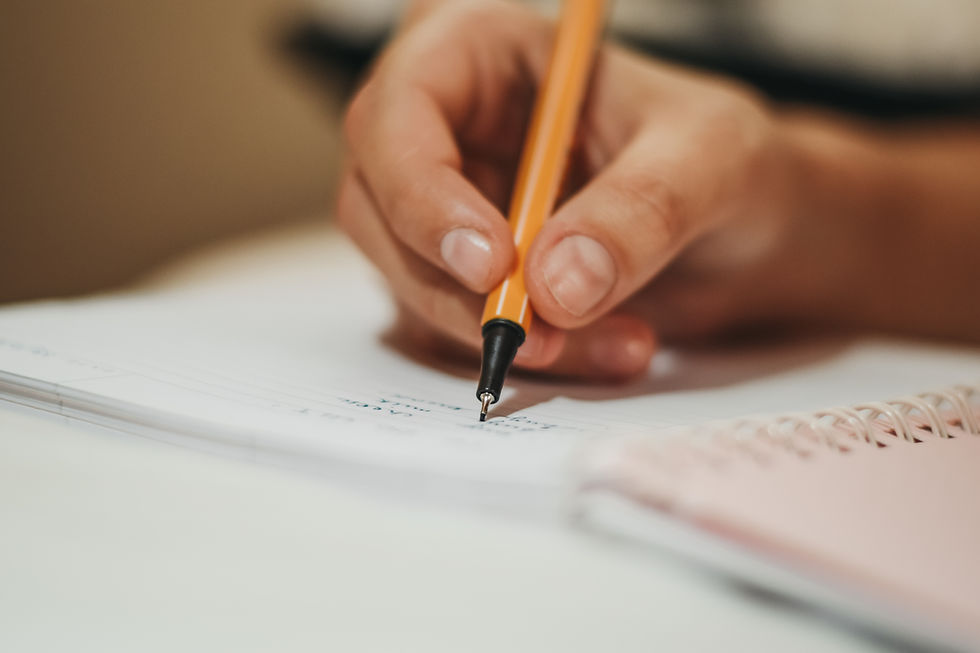Moods and melodies - article in The Hindu
- Prarthana C S
- Dec 8, 2019
- 4 min read
What is it about #music that jogs memories, alters moods and moves entire audiences? My article which first appeared in The Hindu, talks about how the more you appreciate ragas the greater their influence on your moods. Read the article below.
---start text---
When you recognise the raga behind the wildly popular ‘Ghoomar’ song from ‘Padmavat’, you are halfway home
Do you recall that feeling of dread that creeps over you when you sit in a darkened theatre watching a horror movie? Nothing has happened on screen yet, but the music makes your heart race and palms sweat. And it’s not just in a scary scene or a horror movie — it could be a romance or a comedy. From Pride and Prejudice to Bridget Jones’s Diary, they just have to cue the violins for us to reach for our handkerchiefs. All of us have experienced the power of music to move us.
I was 16 when I first heard Hindustani vocalist Kishori Amonkar singing ‘Avagha rang ek zaala’ in raag Bhairavi. It was a cassette recording that my friend had made in Mumbai. I didn’t understand the Marathi lyrics. My friend didn’t understand the intricacies of the raag. Yet we were moved to tears as Amonkar’s rendition brought out the angst of Bhakti poet Soyarabai’s tribulations. The melody worked its magic on both me, the serious classical music learner, and my friend, who preferred Marathi poetry and filmi music. I experienced what neuropsychology researcher Malini Mohana spoke about when she said, “ a tool for arousing emotions and feelings, music is far more powerful than language.”
What is it about music that jogs memories, alters moods and moves entire audiences? The power of music stems from its underlying melody — what we term raag or raga in Indian classical music. What you may not realise is that you know a good deal more about classical ragas than you likely give yourself credit for. Before you dismiss that assertion, ask yourself two questions: ‘Do you listen to Hindi or Tamil or filmi music in any language? Do you enjoy it?’ If you answered yes to one or both, here’s the reason why.
Most Indian popular music, particularly filmigaane (movie songs) have their roots in classical music. And not just the songs from the 1940s or 50s movies, when classical music was de rigueur. Many popular Bollywood songs, such as ‘Ghoomar’ or ‘Chaiyya chaiyya’, have a strong grounding in classical ragas and their inherent power to evoke emotions within us.
Transcending language
The melody is the reason we can be moved easily even when we listen to music in a language we are not familiar with. Whether it’s Gregorian monks chanting in Latin, Tamil priests singing pasurams, or Kishori Amonkar singing a Marathi abhang, we find ourselves transported to a whole other place. So it should be no surprise that an Urdu nazm such as ‘Baat nikalegi’ or a Bengali song like ‘Mallika bone’ can roil our emotions.
When friends ask me how they can understand classical music better, I begin by pointing out that ragas are everywhere around us. In the tunes that we listen to or sing along — on the radio, in the bus, or even in the shower. One of the easiest ways to understand ragas is to listen to a curated list of filmi gaane. For each movie song they listen to, I encourage them to listen to a classical rendition of the same melody. Older songs such as ‘Rasme ulfat’ (from Dil ki Rahen) or ‘Radha na bole re’(from Azaad) are often easier to link to ragas such as Madhuvanti or Bageshri.
Of course, it is important to recognise that the beat, lyrics and melody of filmigaane are not constrained by the rules of classical music. For someone who’s musically untrained, it may not be easy to identify a particular raga with a movie song. Which is why alternating between a film song and a classical rendition by an experienced performer is important.
Movies songs are sometimes an amalgam of one or more ragas, or the composer may have taken liberties with the original structure of the raga. The wildly popular ‘Ghoomar’ from Padmavat or ‘Kandukondein kandukondein’ from the eponymous movie are examples of creative composition based on the original melodic notes of classical ragas.
Moulding the mood
With film music particularly, between the context of the movie’s story and the lyrics of the song, it is easy to assume that these are what set the mood. As you begin to appreciate the melody that underpins a song, and listen to the classical rendition, you will begin to experience how the melody itself moulds your mood.
Just as different situations or experiences evoke different feelings within us, it seems intuitive that changing melodies will invoke a change in our emotions. So, does listening to a certain raga create a specific mood within us? The answer is most definitely yes — just as the melody for a lullaby (Neelambari) is distinctive from one that evokes pathos (Shubha Panthuvarali), or joy (Amritavarshini). Every mood or shade of feeling can be invoked by a specific raga, especially when rendered by an expert. The more you appreciate ragas the greater their influence on your moods.
So if you want to forget those unpaid bills, the last skirmish with your mother-in-law or an impending medical procedure, do pay closer attention to the movie song that you’re humming under your breath. You’ll also learn a thing or two about classical music in the bargain.
---end text---


Comments